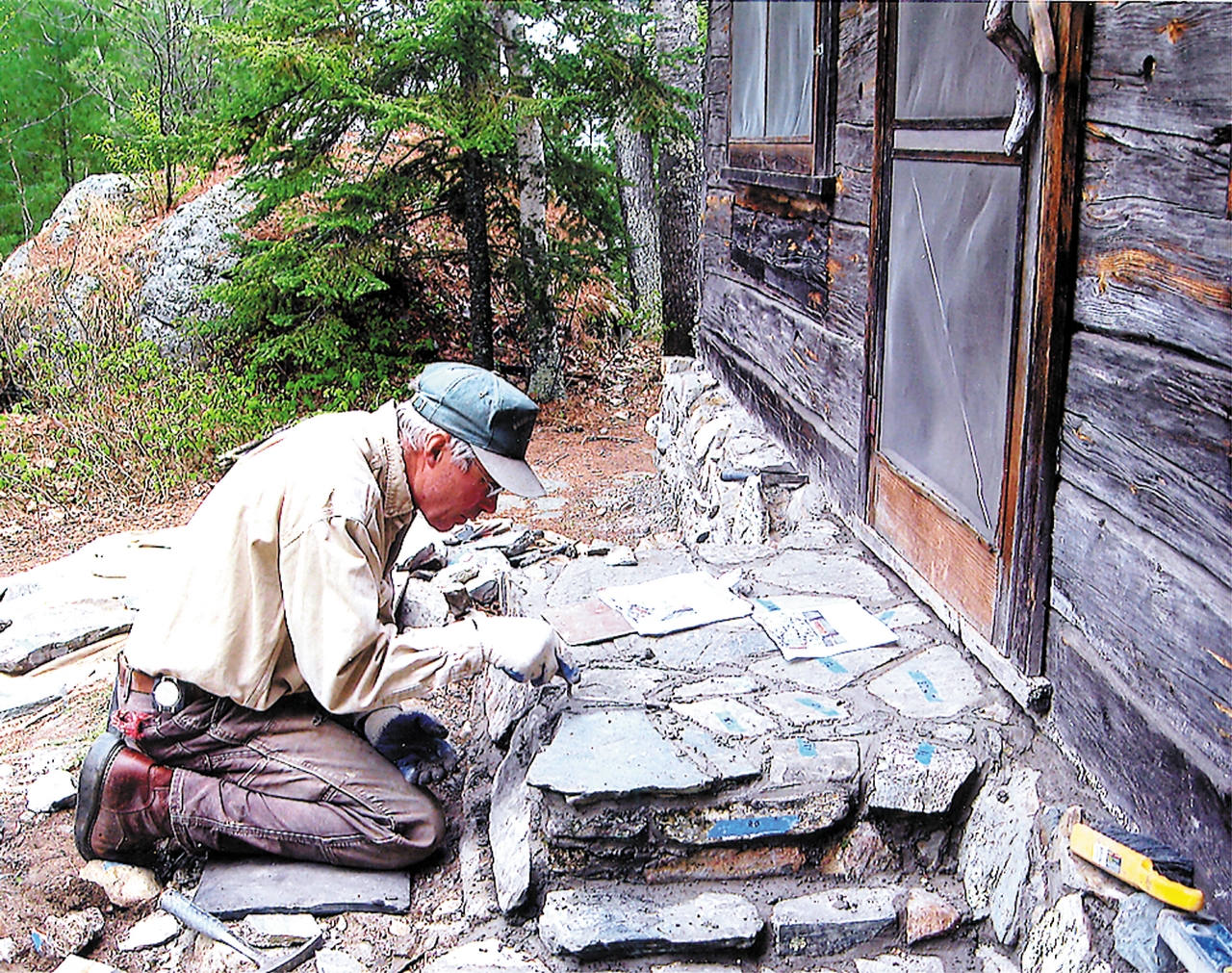Support the Timberjay by making a donation.
History is in the detail
Even rocks need tender-loving care when they’re part of a legacy
Preserving history is a delicate process. Its integrity is beholden to the accuracy of its details. Words and physical elements can’t waver if future generations are to comprehend its …
This item is available in full to subscribers.
Attention subscribers
To continue reading, you will need to either log in to your subscriber account, below, or purchase a new subscription.
Please log in to continue |
History is in the detail
Even rocks need tender-loving care when they’re part of a legacy
Preserving history is a delicate process. Its integrity is beholden to the accuracy of its details. Words and physical elements can’t waver if future generations are to comprehend its significance.
Listening Point, the renowned personal retreat of the late Ely conservationist Sigurd Olson, was placed on the National Register of Historic Places in 2007. Along with the land, it’s comprised of five wooden structures: a cabin, two woodsheds, one sauna and one outhouse.
Olson purchased an old Finnish square-logged cabin in 1956 and moved it in parts to Listening Point later that winter. The following year, he put it back together.
The cabin is the centerpiece of Listening Point. It provided Olson with seclusion where he could engage the qualities of silence. He described that importance in his book “The Singing Wilderness.”
“Over all was the silence of the wilderness, that sense of oneness which comes only when there are no distracting sights and sounds, when we listen with inward ears and see with inward eyes, when we feel and are aware with our entire being rather than our senses… without stillness there can be no knowing, without divorcement from outside influences man cannot know what spirit means.”
According to Listening Point Foundation Executive Director Alanna Dore, age and the elements had taken their toll on the cabin over time. Some parts, like the stone fireplace hearth inside the cabin, the exterior foundation and the steps to the front door, were sorely in need of rehabilitation. When the foundation undertook that job, they defined the phrase “attention to detail.”
Mike Braun, the mason for the project and owner of Braun Construction, explained that the base under the hearth was sinking. Back in the days when it was first constructed, stones were set directly on bare ground with no footing.
What’s more, water had begun to seep behind existing stones in the foundation and the steps. The freeze/thaw of the seasons did some damage.
“Some stones weren’t even in place. They were laying loose on the ground,” he said. “At least the steps had footing.”
The work started several months before actual restoration with some phone calls and a 59-page booklet called “Standards of Rehabilitation” from the U.S. Department of the Interior. The book provides guidelines for renovating buildings on the National Register so that rehabilitation “requires minimal change to the defining characteristics of the building and its site.”
Dore also got a go-ahead for the rehabilitation process from the Minnesota Historical Society and the foundation procured a Legacy Grant from the state to cover the cost of restoration.
Five volunteers began actual work on the cabin in April. LynnAnne Vesper took initial photographs of the hearth, foundation and steps before anyone laid a finger on the rocks. They were used to document the original position of the rocks so the work crew knew exactly where—and how—to put them back.
Each rock was given a number, written directly on the photographs, while the actual rocks were tagged directly with corresponding numbers. Then, with Braun as supervisor, Chuck Wick, Walt Plude, Tim Sundquist and Dore chiseled off the old mortar.
Dore said they performed the work in phases, starting inside with the hearth. They divided the foundation into five sections, then finished off with the steps.
“We didn’t want to have all the rocks pulled off at the same time,” she said. “We would complete one section and Mike put [the rocks] back with a helper.”
Braun said he’s done a couple of restorations in the past, but this was the first he worked on that was listed on the National Register. It was a fun project, but had its challenges. Those started with carting materials to the site by wheelbarrow. But he suspected Olson did it similarly.
Perhaps the biggest challenge was maintaining consistency with the way the rocks were laid the first time. As an example, Braun said Olson had used 16-inch cinderblocks around the foundation that were covered with a rock veneer. The veneer was also 16-inches high and five-inches thick. That meant placing each stone at the proper height and resetting them in the position they were taken off.
“It’s a good thing they had pictures and marked the stones. It would have been a bear to put that back together,” he said.
He added that masonry methods can vary, but for the sake of historical integrity, he had to replicate what was there.
“Every mason has their own technique and I would have done it a little differently than the first person who did it. I even wanted to sneak in a couple of stones but that was not allowed,” he said.
As if rock location wasn’t enough, the new grout had to be dyed to match the color of the previous grout.
In all, the “rock work” took four days despite some rain when workers set up tarps to work beneath.
Dore said the rehabilitation effort was all part of following the foundation’s mission. They’re a nonprofit organization dedicated to preserving Listening Point and advancing Sigurd Olson’s legacy of wilderness education.
For more information, memberships and visits to Listening Point, visit their website at www.listeningpointfoundation.org or call 218-365-7890.






